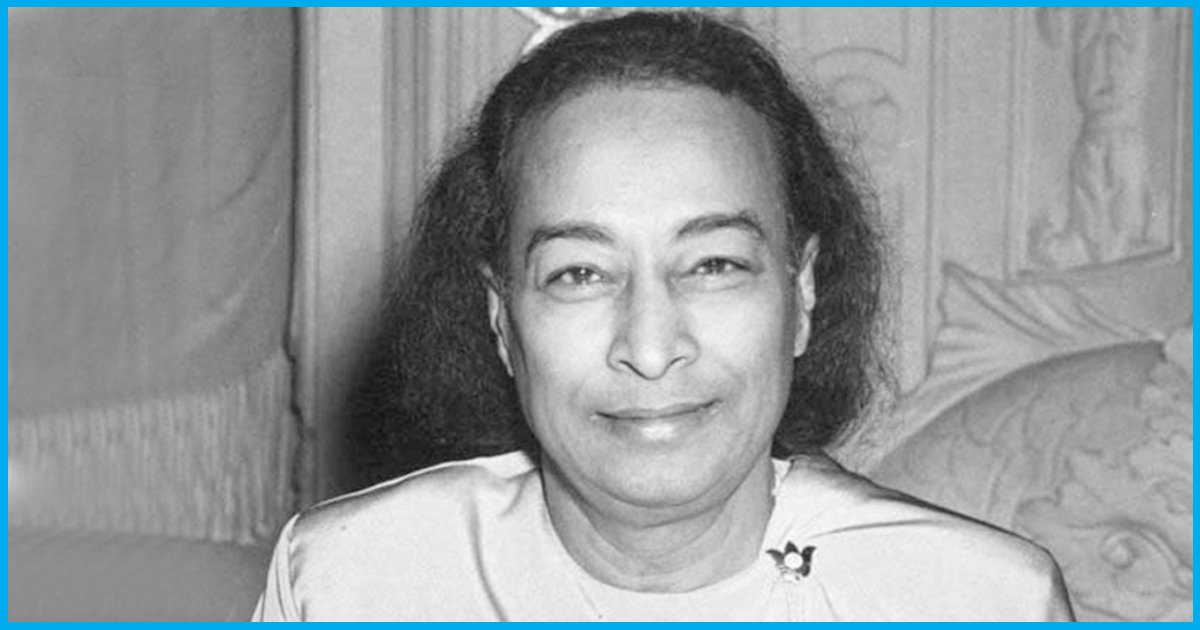
Paramhansa Yogananda: The Man Who Popularised Yoga In The West
21 Jun 2017 1:25 PM GMT
Indian traditions and customs have always been of great interest to the West. One of the major factors that have been attracting Westerners for a long period of time is the concept of Yoga.
On International Yoga Day, The Logical Indian pays tribute to the man who was responsible for popularising Yoga not just among Indians but also among foreigners.
Yogananda Paramahansa made yoga accessible to a modern audience, attracting many followers and inspiring millions who practise this ancient tradition today. Today, his teachings are widely practised around the world.
Childhood days

Paramahansa Yogananda was born as Mukunda Lal Ghosh on January 5, 1893 in Gorakhpur, Uttar Pradesh into a devout and well-to-do Bengali family. He lost his mother at an early age and was the fourth of eight children.
Deeply spiritual in nature, young Mukunda showed an early inclination towards the self-realisation path. In his youth, he sought many of India’s sages and saints, hoping to find a teacher who would guide him on his spiritual quest.
Mukunda was always an ascetic at heart and there were instances when he wanted to run away to the Himalayas in search of the Divine Truth. But, after coming to a compromise with his family, he decided on joining an ashram.
From Mukunda to a Swami
Mukunda came in contact with his guru, Swami Sri Yukteshwar Giri, at a tender age of 17 in 1910 in Benaras (Varanasi). He stayed under the strict tutelage of his guru for a period of ten years. After graduating from Calcutta University in 1915, he took formal vows as a monk of India’s monastic Swami Order where he received the name “Yogananda” (signifying bliss or ananda through divine union – that is, Yoga).
Yogananda was involved in the formation of a school in Ranchi which aimed at providing all-round development for young minds. It would not just give students spiritual education but also a secular one. He formed the Yogada Satsanga Society of India in Ranchi in 1917.
His days in America

In 1920, he went to the United States of America, answering the call to serve as a delegate at the International Congress of Religious Liberals convening in Boston. Making the best use of his oratory skills, Yogananda won the hearts of many in the West. It was the time when the American youth were disillusioned and were looking for alternative ways of living a fruitful life.
Yogananda’s sermons came as a boon to them, marking the beginning of an upsurge in the West of the spiritual wisdom of the East. It was in the same year that he founded the Self-Realisation Fellowship to disseminate his teachings on India’s ancient philosophy of Yoga and its time-honoured science of meditation across the world.
Growing popularity of Yogananda in the West
Over the next few decades, Yogananda travelled extensively across North America and Europe talking about the underlying unity of the world’s religions and introducing the soul-awakening technique of Kriya Yoga.
In 1925, he established the international headquarters for Self-Realization Fellowship at Los Angeles, which became the spiritual and administrative heart of his work.
The importance of Yoga and the science of meditation was spread far and wide by the Swami. He talked of equality and harmony among people in his lectures. His writings had also become famous and they helped a number of people to find out the right way of living.
Back to the roots after a long gap
Yogananda returned to India after a long time in 1925 after his tours in West Asia and Europe. It was during this time that he met Mahatma Gandhi, Nobel-prize-winning physicist CV Raman, and some of India’s renowned spiritual figures, including Sri Ramana Maharshi and Anandamoyi Ma.
Gandhi requested Swami to share his soul-awakening technique with him and his followers; the latter obliged happily.
The later part of his life
Yogananda had mostly confined himself to literary work, editing and revising his earlier work and gradually withdrawing from public life. It was during this time that he was working on his autobiography.
Paramahansa Yogananda passed away on March 7, 1952 in Los Angeles following his delivery of a memorable speech at a banquet honouring Dr Binay R Sen, India’s Ambassador to the United States.
His love for India never left his mind and soul. Even as he was traversing to the ‘other world’, he was praising India, his beloved motherland. He was reciting a few lines from his poem “My India” before sliding to the floor:
“Mortal fires may raze all her homes and golden paddy fields,
Yet to sleep on her ashes and dream in mortality,
O India, I will be there!”
The New York Times, the Los Angeles Times, and Time magazine covered the sudden passing away of the Swami. Yogananda was mourned by a large number of followers who found a different direction to their life through his teachings.
The Indian government formally recognised his outstanding contribution by issuing a postage stamp in his honour in March 1977.
Although the Swami is no longer with us in his physical presence, he is thriving through his lectures and teachings that have inspired masses of people both in India and abroad. This man had dedicated his entire life for the propagation of Indian traditions like Yoga and meditation. He was someone who showed what India is capable of offering to the world community at large. This International Yoga Day, The Logical Indian community salutes the endeavours of this great personality who was responsible for spreading the message of Yoga in its truest sense, far and wide.
This year also marks the 70th anniversary of his spiritual classic, Autobiography of a Yogi. His inspiring life has also been encapsulated in the award-winning documentary Awake: The Life of Yogananda.
 All section
All section













